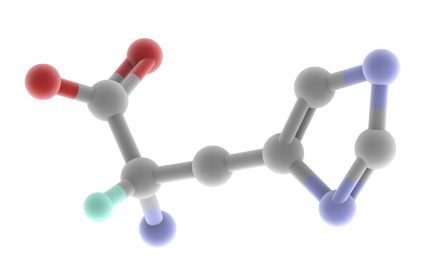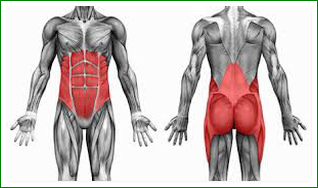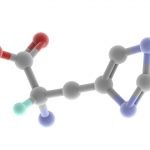A balance of carbohydrates, protein and fat is required to deliver the nutrition you need for energy, effective muscle building and general good health. The food pyramid is the basis for a good balanced diet for everyone as well as being the foundation for an effective sports nutrition plan. It is designed to make sure you get a variety of foods and all of the right vitamins and minerals needed for a healthy body.
The pyramid is made up of six main building blocks, or groups of food:
- Grains (bread, cereals, pasta, rice)
- Vegetables
- Fruit
- Dairy (milk, yogurt, cheese)
- Meat and Beans (meat, poultry, fish, beans, eggs, nuts)
- Oils
In addition to these six groups is a discretionary allowance which includes sweets and treats not included elsewhere in the pyramid. Because the needs of individuals vary, the actual amount required of each food type varies depending on factors such as age, sex and level of activity. Achieving a precise balance is complex but the principles behind the food pyramid are simple and easy to incorporate into your daily eating plan.

Grains
This covers a large range of foods including bread, cereals, pasta and rice which are high in carbohydrates and provide the body with energy.
For optimum fitness, this group should account for at least 60% of the total calorie consumption each day. Depending on individual calorie intake, this equates to between 6 to 8 ounce equivalents each day for a moderately active individual. Training and intense physical activity will increase this requirement. An ounce equivalent in the grains food group equates to half a cup of cooked rice or pasta, an ounce of cereal, an average sized slice of bread or half of a small bagel.
To maximize the benefit of grains, at least half of all grain foods you choose should be wholegrain instead of refined. These provide more roughage and are richer in vitamins and minerals than their more processed counterparts.
Vegetables
Vegetables are packed with vitamins and minerals and a healthy diet should include a minimum of 21/2 to 3 cups a day.
In this group, one cup is the equivalent of a cup of chopped vegetables, two cups of raw leafy greens, or 8 oz of vegetable juice. Vegetables are low in calories, so more is better. The variety of vegetables is endless and many can be eaten both cooked and raw or in juice form. Go for a variety of color and choose fresh or frozen veggies where possible. Canned products tend to contain higher levels of sodium, although rinsing with water helps to reduce it.
Fruit
Fruits are vital to health and like vegetables, are crammed with essential vitamins and minerals.
The daily diet should include between 11/2 and 2 cups a day and again there is a massive amount of choice available. As with vegetables, fresh is best but canned, frozen and dried are also healthy choices, providing they do not contain added sugar. Fresh fruit juices also contribute to the daily requirement. In this group, one cup is the equivalent of a cup of chopped fruit, 8 oz of fresh juice or half a cup of dried fruit.
Bananas, apples or and pears are perfect, portable snacks to assist recovery after a training session.
Meat and Beans
Meat and beans are rich in protein which is essential for muscle building and repair. It is also vital for healthy bones, cartilage, skin and blood as well as the development of enzymes, hormones and vitamins in the body.
Depending on your overall calorie intake, 5 to 61/2 ounce equivalents are required daily. For meat eaters, chicken, turkey, fish are excellent, low fat choices with an ounce equivalent being 1 oz of cooked meat. For non-meat eaters, beans, nuts, eggs and tofu are great sources of protein. Ounce equivalents for favorites in the non-meat category are:
- Peanut butter – 1 tablespoon
- Nuts and seeds – ½ ounce
- Cooked dry beans – ¼ cup
- Egg – 1 whole egg
It is important for meat eaters to eat a variety of non-meat proteins to avoid eating an excess of the saturated fats found in meat.
Milk
Milk and diary products, particularly low-fat milk, yogurt and cheese are important elements in the daily diet and 3 cups per day are recommended.
They are all rich sources of calcium which is essential for bone health, which is particularly important for women. They are also rich in potassium, vitamin D, and protein. It is important to limit the amount of full fat dairy products as these are high in saturated fats and can lead to health problems if eaten to excess.
A cup in this food group equates to a cup of liquid milk or yogurt, 11/2 oz of natural cheese or 2 oz of processed cheese.
Oils
Oils are important for good health with most being high in monounsaturated or polyunsaturated fats, and low in saturated fats. The daily requirement of between 5 and 7 teaspoons is easily obtained from a wide variety of foods including:
- Nuts
- Fish
- Mayonnaise
- Soft margarine (with no trans fat)
- Cooking oil
- Salad dressings
Discretionary Calories
The tip of the pyramid is a discretionary calorie allowance. Any calories left over after eating the essentials from the food pyramid may be spent on treats such as desserts, candy or an alcoholic drink.
So, if your daily allowance is 2,000 calories and you “spend” 1,850 on your essential nutrition, you have 150 calories leftover to spend on the treats of your choice.
Summary
The food pyramid aims to simplify the complex science of nutrition to make it possible for everyone to design a healthy diet. But it can still be a challenge to get the balance right and to make your diet interesting and right for your lifestyle, particularly if you are an athlete or training regularly.
plan:one incorporates the principals of the food pyramid and takes the pain out of preparing your daily nutrition plans, leaving you more time to train. It ensures that you get the perfect balance for your own individual needs every day.
Get the most from the food pyramid with plan:one.












